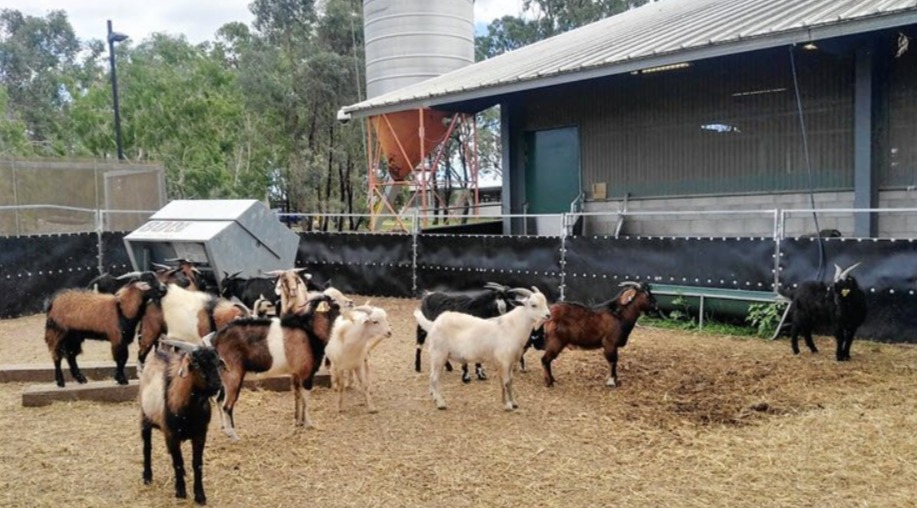
Free-range male kid goats during the research trial.
MEAT quality characteristics of lot-fed male Australian rangeland goats are unaffected by liveweight at slaughter, new research has indicated.
The research has suggested that liveweight of entire male rangeland goats has no effect on meat quality characteristics.
Liveweight had no effect on the proportion of carcase cuts, muscle meat colour, cooking loss, Warner-Bratzler shear force (WBSF), total fat or ash, the research found.
The objective of the study was to evaluate the effects on carcase and meat quality characteristics of intensively finished entire-male Rangeland goats with live weights at slaughter of about 24kg and 34kg, on two important muscles – the longissimus lumborum (LL) and the biceps femoris (BF).
The research found that liveweight did influence the moisture and protein content in the longissimus lumborum and the moisture content in the biceps femoris.
UQ meat scientist Professor Louw Hoffman said the findings help address a lack of published information regarding the potential to increase slaughter weights of Australian rangeland goats and the subsequent effects on carcase meat production and meat quality.
“As rangeland goat production systems become more commercially oriented, potential markets may develop that offer price premiums for certain carcase characteristics, while consumers want consistent meat quality that contains known and familiar characteristics,” Prof. Hoffman said.
The study involved 52 free-range male kid goats being fed Mitchell grass hay and finisher pellets ad libitum for 42 days.
Prior to slaughter, kids were categorised into live weight groups: heavy (more than 33.1kg), and; light (less than 24.3kg).
Fifteen kids per group were randomly selected, slaughtered and carcase characteristics measured.
The longissimus lumborum (LL) and the biceps femoris (BF) muscles were removed for quality measurements.
Carcase characteristics assessed included dressing percentage, carcase cuts and non-carcase components. Meat quality characteristics assessed included pH, colour, cooking loss, drip loss, Warner-Bratzler shear force (WBSF) test and proximate analysis.
Key findings
The study found the heavy group had:
- higher dressing
- hindquarters
- non-carcase component
- offal percentages.
Live weight had no effect on the proportion of carcase cuts, muscle meat colour, cooking loss, WBSF, total fat or ash, but influenced the moisture and protein content in the LL and the moisture content in the BF.
Prof. Hoffman said the findings suggest that live weight of entire male rangeland goats had no effect on meat quality characteristics.
“It was noted that carcase cuts, ultimate pH, physical meat quality, total fat, and ash content of Australian Rangeland capretto meat did not differ despite the differing slaughter body weights.
“As a result, it is possible to obtain similar meat and carcase proportions despite the slaughter body weight differing,” he said.
“Meanwhile, carcase and offal yield, non-carcase components, moisture and protein varied significantly in response to increased slaughter body weight.
“This would result in a higher value carcase when sold based on per kilogram carcase weight, especially if offal components are sold on to other markets,” Prof. Hoffman said.
“The study found that despite increased internal fat content in heavy kids, the total fat content in the two muscles evaluated was unaffected by body weight.
“However, a greater range of slaughter body weight classes than those used in this trial or a continuous weight range may produce more observable differences between Australian Rangeland kids, specifically within physical meat quality, carcase cut proportions and proximate chemical analysis, warranting further research,” he said.
Prof. Hoffman said additional research into female and castrated kids was also needed to ensure the data is representative of Australian rangeland capretto goats.
“From the present study, it can be concluded that intact male kids can be slaughtered at live weights ranging from 21.5–38.5kg when fed under feedlot conditions, and still present lean carcases with favourable yields which increase with increasing live weight at slaughter.”
Source: MLA.



HAVE YOUR SAY